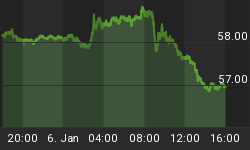Nearly 800 kt LCE of additional lithium would need to come online in the next five years to meet the needs of the battery sector, a new report by Wood Mackenzie states.
The market analyst’s prediction is based on its own Accelerated Energy Transition (AET) scenario, which sees global warming limited to 2.5 degrees Celsius and which presents the idea of the electric vehicle market requiring over 1 million tonnes LCE in 2025.
Similarly, the report states that the cobalt market would have to double by 2025.
“To put this into perspective, to meet the incremental demand from EVs through 2030, an additional eight mines the size of Glencore’s Katanga would be required,” the document reads. “Wood Mackenzie’s AET brings electric vehicle (EV) uptake forward by ten years and sees EVs make up around 40% of passenger car sales by 2030. This considerably accelerates the demand for batteries and the raw materials that go into them.”
Even though at present the battery sector makes up less than 5% of total nickel demand, under WoodMac’s AET, the prediction is that it would rise rapidly to 20% by 2025 and 30% by 2030. Thus, an additional 1.3 million tonnes of nickel suitable for the battery sector would be required by 2030.
When it comes to graphite, the report forecasts that the battery sector would make up more than 35% of demand by 2030, with demand growing by 1.6 million tonnes by that date.
“Given that spot prices for most battery metals are currently in the doldrums, and miners typically require higher prices to incentivize new supply, relying on the natural cycle of mine development would appear to be a losing strategy if the world requires a large number of EVs in a short space of time. An AET will need a helping hand to get things moving,” Gavin Montgomery, Wood Mackenzie research director, said in a media statement.
In Montgomery’s view, finding alternative sources of metals, including using secondary supply through recycling, is another option available to the industry. However, he noted that current EV sales are too low to generate a sufficiently large scrap pool to create any meaningful new source of supply by 2030.
“Scrap supply will become increasingly important as we move further out beyond 2030 but there will be no magic pill over the coming years,” the executive said. “With so many challenges surrounding a supply increase, Wood Mackenzie says a more likely alternative may be to reduce the demand for these critical battery materials.”
By Mining.com
More Top Reads From Safehaven.com:

















